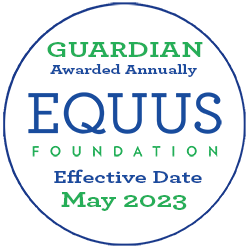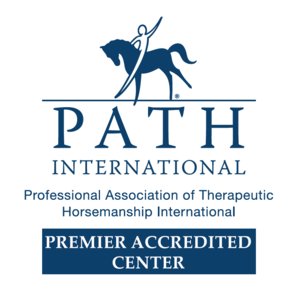Married for 43 years, Tom and Jann Ibsen raised a family and enjoyed adventurous travel. While vacationing in 2008, Jann’s right hand tremor signaled the early stages of Parkinson’s disease. She was 59 years old.
As the effects became more debilitating, Jann needed help to walk. Undaunted by illness, she summoned herself into action. Recommended by a physical therapist, she discovered Little Bit in 2015. An animal lover, Jann was delighted by the prospect of equine-assisted therapy.
It took six months of conditioning for Jann to develop leg strength to ride Della. A year later, she was struck with cervical dystonia, or tilted head, making riding impossible. Jann was devastated, but asked to try grooming. Responding to her new norm, Little Bit customized unmounted grooming sessions with horse Honey Bee as part of her care continuum. As a result, Jann’s endurance increased from 15 to 40-minute sessions, and her range of motion expanded from six to 24 inches.
Therapy sessions are a family affair. Tom supports Jann with a gait belt, providing a joyful, shared experience with his wife. They have developed enduring friendships with Instructors Diana and Joan, and Volunteer Kathy. Commissioned by the Ibsens, a painting of Honey Bee graces their mantle, affirming that she is as much a part of their clan as their three dogs, two birds, and numerous fish.
Jann asserts, “Parkinson’s has interrupted my life, but there is still life to live.” Little Bit empowers her to live a more active lifestyle, despite age or illness. The Ibsens encourage people of all ages and abilities to seek engagement, hope, and healing at Little Bit.
Your support lifts hearts and makes Little Bit "magic" possible.
Thank you and Happy Valentine’s Day to you and all those you love from Jann's team and Little Bit!
Written by Michelle Guinyard
Photographs courtesy of Jessica Farren Photography.













